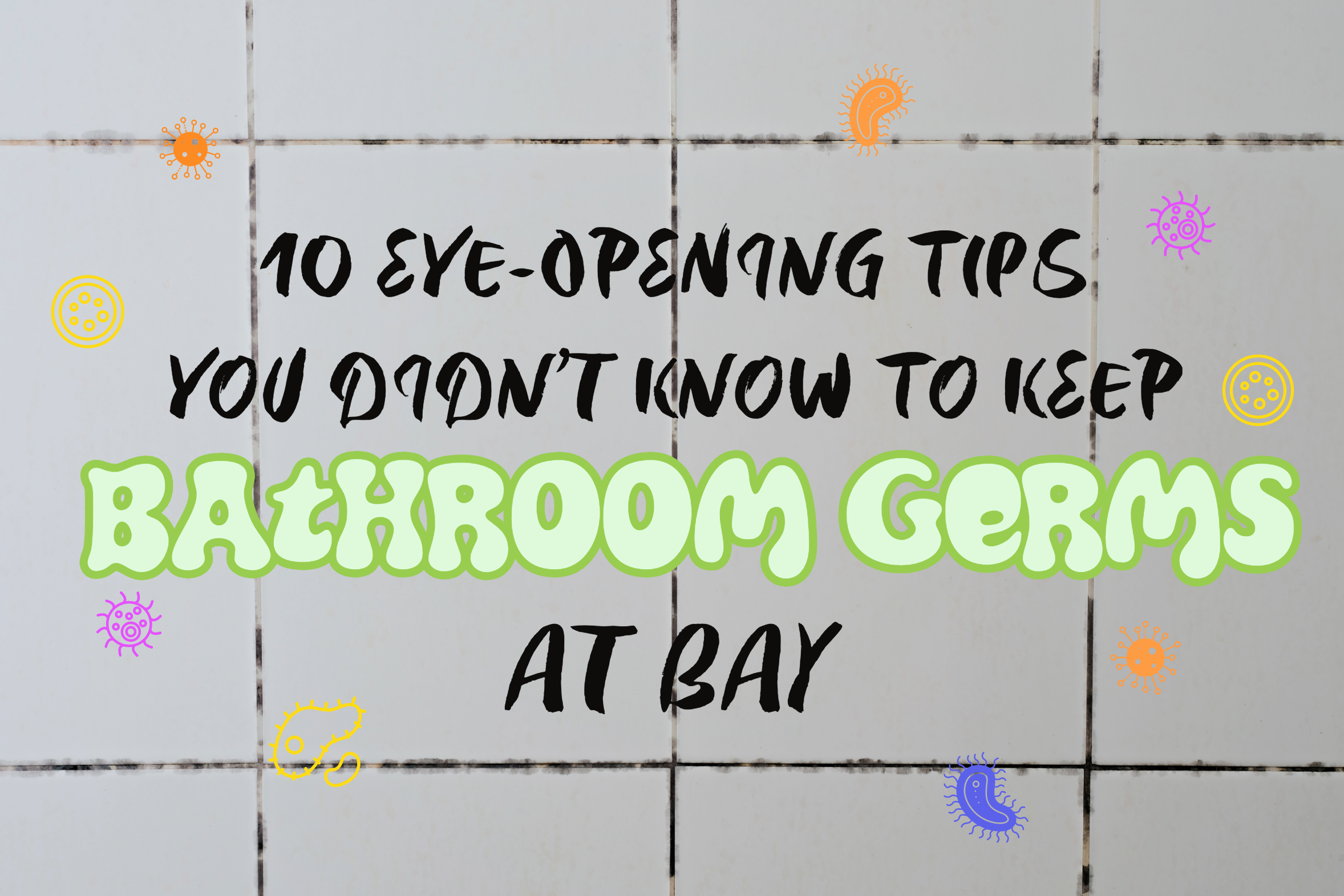Join us today as your reliable team of Gahanna Plumbing & Drain professionals share ten valuable tips to maintain a clean and hygienic bathroom. Our expertise in promoting hygiene practices and sanitary habits will help you keep those pesky bathroom germs at bay. Rest assured; we are here to provide you with the knowledge and services you need to ensure a cleaner and healthy space.
The Dirtiest Areas in Your Bathroom:
Before we plunge into our tips, it’s important to understand the areas in your bathroom most prone to germs. These areas include:
- Toilet seat and handle: It is crucial to disinfect these surfaces regularly as they are prone to bacterial contamination.
- Sink faucet and handles: These areas are frequently touched and can harbor germs, so routine cleaning is necessary.
- Shower curtains and bath mats: Due to moisture, it is important to regularly replace or wash these items to prevent mold and bacteria buildup.
- Towels and washcloths: To prevent the spread of bacteria, it is essential to wash and change these personal care items frequently.
- Countertops and surfaces, especially around sinks: Keeping these areas germ-free requires regular wiping with disinfectant.
The Kinds of Bacteria Found in Bathrooms:
Now, let’s discuss the bacterium types commonly found in bathrooms:
- E. coli
- Staphylococcus
- Salmonella
- Influenza virus
- Norovirus
10 Eye-Opening Tips to Keep Bathroom Germs at Bay:
Handwashing Methods- Proper handwashing is of utmost importance, and it’s always worth reinforcing this practice. Ensure that everyone in your household knows the correct way to thoroughly wash their hands with soap and warm water for at least 20 seconds. Following CDC guidelines, effective handwashing is a fundamental measure to prevent the spread of germs.
Bathroom Cleaning Schedule- To ensure consistent cleanliness, it is recommended to designate a specific day of the week for bathroom cleaning. Establishing a routine for thorough bathroom cleaning will help you stay organized and ensure that this task is completed regularly.
On top of that, it is beneficial to keep antibacterial wipes readily available. Using wipes for quick and convenient disinfection helps to control the spread of germs between regular cleaning sessions.
Enclosed Toothbrushes – To maintain optimal oral hygiene, try to use toothbrushes with covers. This simple practice helps prevent airborne bacteria from landing on toothbrushes. Factors such as proximity to the toilet, aerosolized particles during flushing, and contact with hands can contribute to bacterial contamination. By keeping toothbrushes covered, you can minimize this risk and ensure better oral health.
Proper Toilet Flushing – To minimize the spread of toilet bacteria, close the toilet lid before flushing. This simple action helps contain bacteria and prevents the dispersion of airborne particles from the toilet throughout the bathroom. It’s probably safe to assume you would not like airborne toilet particles landing on your uncovered toothbrush.
Touchless Faucets – Minimize surface touching and reduce the risk of cross-contamination by using hands-free fixtures such as motion-sensor faucets. By eliminating the need for direct surface contact, these fixtures can help maintain a cleaner and safer environment.
Disinfected Toilet Brushes – Be sure to clean your toilet brush after each use. If you are using a toilet brush that has disposable ends – great! However, if that is not an option, aim to clean the toilet brush after every use instead. To clean the toilet brush, hold it with the bristle end over the toilet. Then, pour hot water and bleach over the bristles. Afterward, prop the toilet brush handle between the toilet bowl and seat lid to keep it elevated. Allow it to air dry for at least five minutes before returning it to the holder.
Clean Shower Curtains – Regularly changing shower curtains every few months or opting for washable fabric liners can help prevent the buildup of bacteria and mold.
Toilet Bidets – Bidets offer a thorough and hygienic alternative, providing a cleaner option compared to traditional toilet paper, thereby reducing the risk of germ transmission through hand contact. Additionally, bidets are affordably priced and can be easily installed without professional assistance.
Sufficient Bathroom Ventilation – Make sure your bathroom gets proper ventilation after every shower or bath. In doing so, you will help to reduce moisture and create an environment less favorable for bacterial growth. Use methods like exhaust fans or open windows for effective ventilation.
Professional Drain Cleaning Services – Household drains can become a breeding ground for bacteria due to the accumulation of organic matter, soap scum, and debris. Preventing bacterial and mold buildup in your drains is crucial. Scheduling professional drain cleaning every 1-2 years helps maintain a healthy plumbing system, preventing clogs and unwanted bacterial growth. For more information, please don’t hesitate to give us a call. We’re here to help!
Incorporating these tips into your routine will help you achieve a cleaner bathroom with reduced germs, effectively decreasing the chances of bacterial spread. Maintaining good bathroom hygiene is crucial for overall health, home cleanliness, and even the proper functioning of your plumbing system.
Call Gahanna Plumbing & Drain today at (614) 245-2256 or schedule an appointment online now by clicking here!




